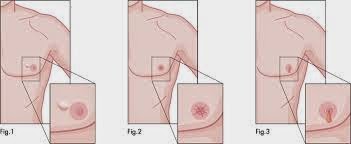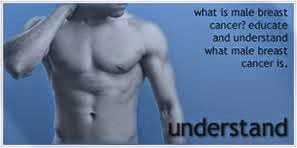While rare, breast cancer does occur in men and is often diagnosed at a later age and stage than in women.
Each year in the United States, about 2,000 cases of male breast cancer are diagnosed and about 500 men die from the disease. It can strike at any age, but is most often diagnosed among men at ages 60 to 70, which is five to 10 years later than in women.
Breast cancer in men is typically diagnosed at a later age and stage than in women because men don't believe they're at risk for the disease.
You'd think that because men have smaller breasts they would notice a lump instantly. But men don't expect a breast lump to be cancer, whereas most women who feel a breast lump immediately assume the worst.
Because breast cancer in men accounts for only 1 percent of all breast cancer cases, there is little research into treatments for men with the disease.
Clinicians tend to treat men the same way we treat women.
Men have historically been excluded from breast cancer trials. Researchers are actively encouraging drug companies to include men in all breast cancer trials unless there is a valid scientific reason not to. The number of men in breast cancer trials will still be small because male breast cancer is a rare condition, but any information to help men facing this disease is better than none.
Most men with breast cancer have painless lumps that can be detected by touch, but the disease usually isn't diagnosed until they develop soreness.
Cancer Symptom in Men No. 1: Breast Mass
If you’re like most men, you’ve probably never considered the possibility of having breast cancer. Although it’s not common, it is possible. Any new mass in the breast area of a man needs to be checked out by a physician.
Continue reading below...
In addition, the American Cancer Society identifies several other worrisome signs involving the breast that men as well as women should take note of. They include:
- Skin dimpling or puckering
- Nipple retraction
- Redness or scaling of the nipple or breast skin
- Nipple discharge
When you consult your physician about any of these signs, expect him to take a careful history and do a physical exam. Then, depending on the findings, the doctor may order a mammogram, a biopsy, or other tests.
Cancer Symptom in Men No. 2: Pain
As they age, people often complain of increasing aches and pains. But pain, as vague as it may be, can be an early symptom of some cancers. Most pain complaints, though, are not from cancer.
Any pain that persists, according to the American Cancer Society, should be checked out by your physician. The doctor should take a careful history, get more details, and then decide whether further testing is necessary.
If it's not cancer, you will still benefit from the visit to the office. That’s because the doctor can work with you to find out what's causing the pain and determine the proper treatment.
Cancer Symptom in Men No. 3: Changes in the Testicles
Testicular cancer occurs most often in men aged 20 to 39. The American Cancer Society recommends that men get a testicular exam by a doctor as part of a routine cancer-related checkup. Some doctors also suggest a monthly self-exam.
SOURCE: U.S. Food and Drug Administration, news release, June 27, 2014



No comments:
Post a Comment